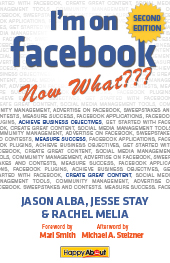 By Bill Doerr
By Bill Doerr
Sales and Marketing Editor
Bill's section is brought to you by qAlias
15 Second Executive Speed Read
Marketing, like many things is something you either do by design or by default. And, if it’s ‘default’, it’s ‘de fault’ of you for not doing it ‘by design’.
In this article, you’ll learn some insights gleaned from some recent conversations I’ve had with people who are doing their marketing by design. And, as result, are doing it with much better results than those who aren’t.
THE BACKGROUND
I made two blog posts recently. In one I mentioned how I’ve been waiting for a contractor to get back to me on a project for my home. With fall setting in last year, he said, “Let me get back with you on this in the spring”. I said, “OK”. Well, spring came. And now it’s summer. I never heard from the contractor. And I have a check waiting for him to do this next little project. So now I’m talking with another contractor and the first guy’s lost a ‘low-hanging fruit’ opportunity.
A second post was about a certain business person – a realtor. This person is, on a personal level, a nice guy. Personable. Pleasant. I’m sure he’d do a great job for you if you asked. But as a marketer, he effectively cancels out his ‘strengths’ as a personable professional by being a marketing mess.
For example, he mails out ‘one-size-fits-all’ postcards addressed to ‘__________ or current resident’ (wow, super duper extra points for that one!) and often on topics that are of no interest, value or relevance to me or anyone else in my household. Consequently, his ‘intrusion’ marketing is amateurish and borderline offensive. In each piece he mails – and to his credit he does mail regularly – I can’t recall a distinct offer to contact him. Nor have I ever received a follow-up phone call asking what I think of his mailings or if I have any interest in knowing more about his services.
 I guess he believes his recipients are psychic and will just ‘get’ that he wants you to call him. Must be he comes from the ‘Hey, look at me -- I’m on the moon’ school of marketing! And it seems he assumes that all he must do is ‘show up’ on my mental radar screen on a regular basis and if I need or want a realtor, then he’ll get my business. That may work for some people. But I doubt it works for most. And if this guy’s not careful, I’m betting a more thoughtful and intentional effort by an even less capable realtor will produce more transactional opportunities.
I guess he believes his recipients are psychic and will just ‘get’ that he wants you to call him. Must be he comes from the ‘Hey, look at me -- I’m on the moon’ school of marketing! And it seems he assumes that all he must do is ‘show up’ on my mental radar screen on a regular basis and if I need or want a realtor, then he’ll get my business. That may work for some people. But I doubt it works for most. And if this guy’s not careful, I’m betting a more thoughtful and intentional effort by an even less capable realtor will produce more transactional opportunities.
I don’t want to rip this guy a second you-know-what and I don’t know if he’s truly ignorant of how to cultivate a relationship properly or if he’s just afraid to engage with prospects in a forthright and deliberate manner or what.
Regardless, it’s definitely NOT the way you want to go about courting someone’s awareness and affection to develop a productive business relationship over time.
THE INSIGHT
If you buy (and I sincerely hope you do) the reality that most prospects for your services are likely to develop a recurring need or desire for the benefits your services offer . . . over time . . . (also known as the ‘lifetime’ value they offer a marketer like yourself) then it’s incumbent on you to find a way to ‘keep in touch’ and ‘stay in mind’ so that, when (not if!) the next ‘need-to-know’ occurs in a prospect for your services they will already:
1) know you (you’re a recognized ‘bogey’ on their radar screen),
2) like you on a personal basis (they find you to be an attractive personality)
3) trust you to have integrity (your words and deeds align), and
4) respect you as a professional (you’re seen as a credible expert in your field)
So, what you want your marketing to do then is make certain that these four outcomes occur for you better and more frequently than they do for your competitors. Fair?
THE OBSTACLE
All that’s well and good. But here’s the problem. It’s not easy to orchestrate all the myriad messages such as phone calls, mailings, emails, etc. that need to be planned, coordinated, implemented, and followed-up in a timely manner so that the lifetime value of your future prospects (which includes your existing clients!) will be realized by you and not some competitor.
 While a ‘markitect’ (cute term . . . think about it!) can help you design a marketing follow-up campaign so you maintain a ‘top-of-mind’ awareness with your prospects, you’ll quickly realize that what keeps the potential value of such a plan from being realized is your ability to implement it correctly, consistently, efficiently, effectively and in a timely manner. That . . . is not easy. It’s probably where the saying, “It’s easier said than done” comes from, too!
While a ‘markitect’ (cute term . . . think about it!) can help you design a marketing follow-up campaign so you maintain a ‘top-of-mind’ awareness with your prospects, you’ll quickly realize that what keeps the potential value of such a plan from being realized is your ability to implement it correctly, consistently, efficiently, effectively and in a timely manner. That . . . is not easy. It’s probably where the saying, “It’s easier said than done” comes from, too!
THE SOLUTION
Fortunately, you CAN do something about this.
Planning is one thing. And, a very important thing. But DO-ing. Boy, that’s critical.
And doing a lot of things – messaging – with a lot of people – your prospective clients -- all the time (potential chaos!) is not a ‘walk in the park’.
As the number of people you’re trying to ‘keep in touch’ with grows, your ability to keep up with the monster of demand you’re creating . . . slows. Until one day you hit the proverbial marketing ‘wall’.
At that point, what will be of immense interest to you is what used to be called CRM.
Unfortunately, CRM has earned a bad reputation with many marketers because the ‘promise’ of what CRM is touted to do is often not realized by the companies that buy it.
Regardless why that is, the idea behind CRM is that you’ll be able to do the right thing with the right person at the right time for the right result you want . . . every time . . . by design, not accident.
Change ‘CRM’ to ‘Marketing Automation’. This term refers to a whole new class of software that’s accessed via the internet rather than an application that resides on your own PC or network.
This new class of software reduces the ‘workload’ of marketing your services and building relationships that, as a result, increases the likelihood of you going to the bank a little more often with a lot more money.
THE RECOMMENDATION
I urge you to learn more about this new kind of marketing automation software. More importantly, learn about what it can do for your revenues – THAT is why you should care.
Recently, I’ve spoken with a couple of leaders in this field and each would, I’m sure, welcome your interest in learning how their software can help you automate your marketing and, as a result, generate bigger and better revenues for your company.
Here are two of my ‘Top Picks’ for a smaller firm or solo-entrepreneur:
Infusionsoft -- by Infusion Software – Phoenix, AZ
Clate Mask, CEO is a highly educated and down-to-earth guy who used a customer-centered philosophy and his own software to become a member of the
INC. 5000 Fastest Growing Companies in America in 2007. While priced above many in this field, this marketing automation software incorporates many integrated features that others either don’t or you have to buy ‘a la carte’ for more expense.
As a one-stop-shop for improving your marketing, Infusion Software also hosts a monthly webinar with marketing gurus like John Jantsch, Michael Gerber, etc. for both their clients and prospects alike.
Office Autopilot -- by Moonray Software – Santa Barbara, CA
Landon Ray, CEO of Moonray is a personable individual who is also a private pilot – as am I. As such, he understands that a ‘complex cockpit’ isn’t the best way to help you get a productive result. “Simple” he said, “is what we know works best and ‘simple’ is what we deliver in our marketing automation software”. He does. And far better than do many higher priced alternatives. OfficeAutopilot is designed for 1) ease of use – even for a ‘solo’ pilot / entrepreneur and 2) for power – to easily plan, execute, maintain and measure any and all prospect contacts regardless of type – phone calls, emails, direct mails, website visits, etc. Definitely worth checking out!
What I like about each of these solutions is that they have done a better job than most of their competitors in ANTICIPATING what you, my dear reader, want from your marketing efforts (revenues, Duh!) and they’ve created a near custom-tailored solution of laser-focused capabilities in their software that delivers what you need . . . to get the revenues you want.
If there’s tweaking to be done, it’s relatively minor because the marketing tasks you want to do were the driving force behind what their software became . . . i.e. ‘form follows function’ is really true here. And, with OfficeAutoPilot . . . it’s extremely affordable for even a one person business.
While the pricing can vary with the capabilities desired and delivered, if you’re not checking out this kind of software solution to predictable marketing challenges be warned . . . I’ll bet your competitors will be soon -- if they aren’t doing so already!
Next month I’ll be reporting on another but very different solution to help you develop your clientele . . . by design, not accident.
Bill Doerr, CCO of SellMore Marketing, LLC is the creator of The Preferral Prospecting System™,
The Expert Directory™, The Client Machine™ and The Ultimate Client Development System™.
Bill uses these services to help service providers build their business by leveraging relationships and generating more introductions to new business. You can reach Bill by phone at: 860-798-6964, online: www.sellmoremarketing.com or http://www.getnewclientsnow.com/ by email: billd@sellmoremarketing.com or through the TNNW Blog: http://thenationalnetworker.blogspot.com
Forward/Share This Article With Colleagues And Social Media:

Are You Working Way Too Hard for Far Too Little?
 As an unbiased reporter who has been involved in Business networking, both as a participant, teacher and author, for nearly 20 years, I suggest to anyone who asks to find a group your are comfortable in considering the personality of the group, the business you can give and receive, and with the financial obligations, if any, of being involved in the group. I feel that Tulsa has set a great year round-model for business networking. The Tulsa Metro Chamber calls it the Networking Circuit.
As an unbiased reporter who has been involved in Business networking, both as a participant, teacher and author, for nearly 20 years, I suggest to anyone who asks to find a group your are comfortable in considering the personality of the group, the business you can give and receive, and with the financial obligations, if any, of being involved in the group. I feel that Tulsa has set a great year round-model for business networking. The Tulsa Metro Chamber calls it the Networking Circuit.





























